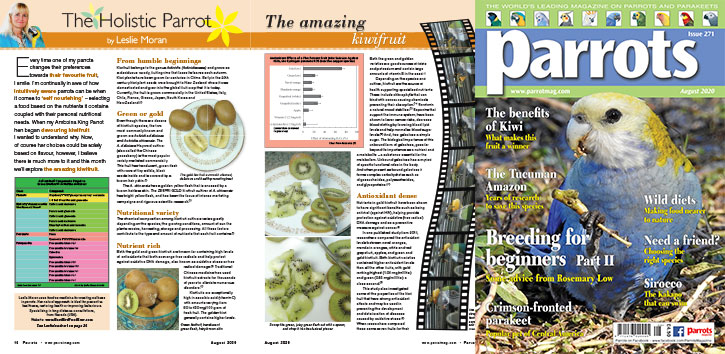
The amazing kiwifruit
Every time one of my parrots changes their preferences towards their favourite fruit, I smile. I’m continually in awe of how intuitively aware parrots can be when it comes to ‘self nourishing’ – selecting a food based on the nutrients it contains coupled with their personal nutritional needs. When my Amboina King Parrot hen began devouring kiwifruit I wanted to understand why. Now, of course her choices could be solely based on flavour, however, I believe there is much more to it and this month we’ll explore the amazing kiwifruit.
Kiwifruit belongs to the genus Actinidia (Actinidiaceae) and grows as a deciduous woody, fruiting vine that loses its leaves each autumn. Kiwi plants have been grown for centuries in China. Early in the 20th century kiwi plant seeds were brought to New Zealand where it was domesticated and grew into the global fruit crop that it is today. Currently, the fruit is grown commercially in the United States, Italy, Chile, France, Greece, Japan, South Korea and New Zealand.
Even though there are dozens of kiwifruit species, the two most commonly known and grown are Actinidia deliciosa and Actinidia chinensis. The A. deliciosa Hayward cultivar (also called the Chinese gooseberry) is the most popular variety marketed commercially. This fruit has translucent, green flesh with rows of tiny edible, black seeds inside and is covered by a brown hairy skin.








Parrot Chat
Buyers Guides
Breeding articles